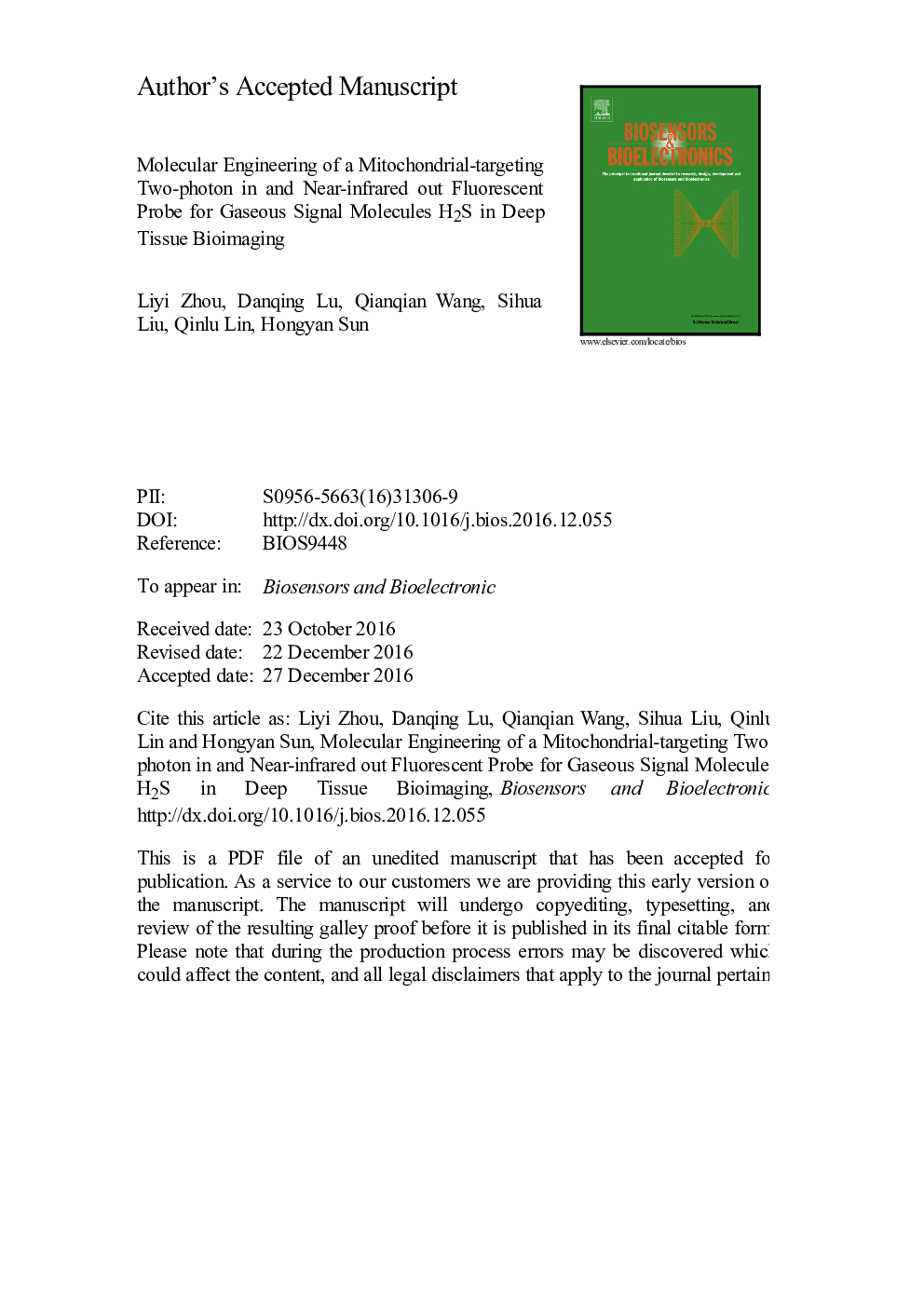| Article ID | Journal | Published Year | Pages | File Type |
|---|---|---|---|---|
| 5031209 | Biosensors and Bioelectronics | 2017 | 24 Pages |
Abstract
Hydrogen sulfide (H2S), one of the biologically important gaseous signal molecules, plays an essential role in diverse normal biochemical functions and pathological processes. Herein, an efficient two-photon in and near-infrared out mitochondria-targeting dye has been designed, synthesized and characterized. It is easily synthesized by the condensation reaction (CËC) of 4-hydroxybenzaldehyde and 6-(diethylamino)â1,2,3,4-tetrahydroxanthylium (mitochondria-targeting), which possesses large two-photon action absorption cross-section ~160 g and high fluorescence quantum yield ~0.15. Encouraged by the results, we proceeded to conjugate this new dye with a H2S recognition moiety (4-dinitrobenzene-ether, DNB), on the basis of the intramolecular charge transfer (ICT) strategy, to construct a novel H2S fluorescent probe (TP-NIR-HS), which shows a targeting ability with high sensitivity and selectivity, and low cytotoxicity. This new probe was then applied for two-photon imaging of living cells and tissues and showed high imaging resolution and a deep-tissue imaging depth of ~350 µm, thus demonstrating its practical application in biological systems, and providing a valuable theoretical basis and technical support for the study of physiological and pathological functions of H2S.
Keywords
Related Topics
Physical Sciences and Engineering
Chemistry
Analytical Chemistry
Authors
Liyi Zhou, Danqing Lu, Qianqian Wang, Sihua Liu, Qinlu Lin, Hongyan Sun,
